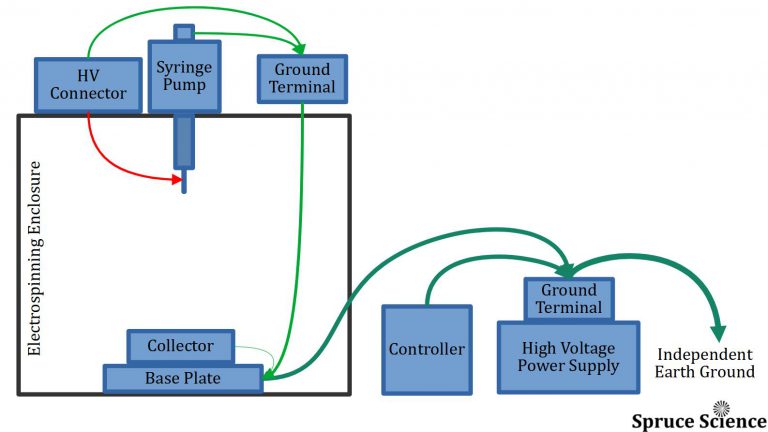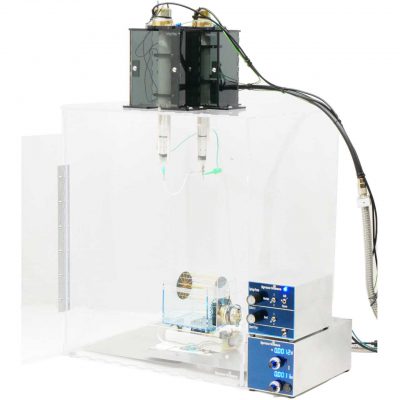High Voltage System Grounding
Introduction to High Voltage System Grounding
The high voltage power supply is a specialized piece of equipment that generates stable and regulated high voltage. It is a compact, standalone unit that is used in larger high voltage systems and a variety of applications, including scientific research, medical equipment, and industrial processes. These systems, known as system level equipment, consist of a collection of components, devices, wires, software, and hardware that work together to achieve a specific function at a higher level.
In a system level equipment with multiple components and devices, there may be several ground paths that need to be managed. Proper management of these ground paths is crucial to ensure the stability and accuracy of the high voltage output. If the high voltage output is unstable or inaccurate, it can cause problems within the system and hinder the reliability of results. By properly configuring the grounding in a system level high voltage system, you can help ensure that the high voltage output is stable and accurate, enabling your products to function optimally.
In high voltage systems, it is important to have a strong and reliable connection to the earth, known as grounding, to reduce potential risks and ensure the safety of equipment, devices, and people. This connection serves as a reference point for the system’s voltage and provides a path for electrical current to be safely discharged in the event of arcing. Proper grounding is essential for all electrical systems, devices, and equipment and is necessary for safety purposes. It helps to protect electronics and maintain stability by preventing voltage fluctuations. To ensure the smooth operation of a high voltage system, it is important to prioritize proper grounding. The earth ground serves as a reference point for the voltage of the system and provides a path for electrical current to flow to the earth in the event of arcing, which is a common occurrence in high voltage applications.
High Voltage System Grounding Schematic
Working with high voltage can be both exciting and dangerous. The potential for impressive physical phenomena, such as those observed in electrospinning, makes it an exciting field to work in. However, as the voltage level increases, it becomes increasingly important to carefully manage the grounding path and establish proper grounding in high voltage systems to prevent accidents and protect against damage. It is crucial to take the necessary precautions to properly manage the risks associated with high voltage systems in order to ensure their safe and effective operation.
The electrospinning machine will be used as an example to demonstrate proper high voltage system grounding techniques.
Electrospinning is an exciting high voltage method for producing nanofibers. It involves using a high voltage power supply to create continuous fibers that are nanometers to micrometers in diameter. This process can be used to make fibers from a wide range of synthetic and natural polymers and is attractive due to the small diameter, high porosity, and high surface-to-volume ratio of the resulting fibers. The versatility and unique properties of these fibers make electrospinning a valuable tool in a variety of fields.
The Electrospinning Machine 30kV is an exciting high voltage system that is fully integrated and enclosed for enhanced control over the electrospinning process. Its compact and lightweight design adds to its versatility, and the apparatus includes a syringe pump with adjustable flow rate, fiber collector with adjustable speed, linear stage for the collector assembly, controller, and a powerful 30 kV high voltage power supply that is adjustable up to +30kV at 0.4mA. Proper grounding is crucial for the smooth operation of this high voltage system, as illustrated below.

30 kV High Voltage Power Supply
As outlined in the high voltage system ground circuit, an independent earth ground is directly connected to the 30 kV high voltage power supply. This standalone equipment is used to generate a high voltage, which creates an electrical potential difference between the needle tip and collector for the electrospinning process. The 30 kV power supply is designed with a “star” grounding technique to establish grounding for the input power source, programming input signals, and high voltage return. This technique helps to ensure proper functioning and prevent issues by giving each ground its own dedicated current return path. Using a star grounding technique and dedicating separate current return paths for each ground can improve the overall performance of the system by reducing noise and interference. Proper grounding for a high voltage power supply is critical for ensuring stable and accurate output. For more information on high voltage power supply grounding, click here.
After the independent earth ground is established for the 30kV high voltage power supply, the ground terminal on the back panel of the power supply becomes the central grounding point for the other sub-assemblies on the electrospinning machine. Each device or module is given its own independent ground path with a dedicated return path to the earth ground connection point. This helps to ensure proper functioning and prevent issues in the high voltage system. The use of independent ground paths and dedicated return paths allows for optimal performance and safety in the electrospinning process.
Controller
The controller is an important device on the electrospinning machine that is used to adjust the flow rates of the syringe pump, fiber collector rotation speed, and linear stage movements. As shown in the high voltage system ground circuit, the controller’s chassis ground is connected to the 30kV high voltage power supply earth ground terminal. This connection helps to ensure proper functioning and prevent issues in the high voltage system. The use of a dedicated ground path and return path for the controller helps to optimize performance and safety in the electrospinning process.
Electrospinning Enclosure
The other functional parts of the electrospinning machine, such as the syringe pump and collectors, are all integrated into a transparent enclosure. This enclosure is treated as a single entity in terms of grounding, with the ¼” thick Aluminum base plate serving as the central grounding point for the sub-assembly. The use of a dedicated grounding point helps to ensure proper functioning and prevent issues in the high voltage system. The transparent enclosure allows for easy visualization of the electrospinning process while the use of a thick Aluminum base plate adds to the overall safety and performance of the system.
The first part of the enclosure is the syringe pump, which is used to deliver the sample solution to the needle tip at a consistent rate. The intense electric field at the needle tip transforms the solution into electrospun fibers. The syringe pump is electrically insulated and designed to withstand high voltages. It uses a DC motor, which is at ground potential, to push the syringe. The ground path for the syringe pump DC motor and sensors is connected first to the ground terminal on top of the apparatus and then to the Aluminum base plate.
The high voltage connector assembly is installed on top of the apparatus to provide a quick and removable connection between the electrospinning tower and the 30kV high voltage power supply. It uses high voltage cable with a coaxial structure, where the center conductor carries the high voltage and the outer shell acts as a ground shield. The ground for the high voltage cable assembly is also connected first to the ground terminal on top of the apparatus and then to the Aluminum base plate on the bottom. This grounding setup helps to ensure the safe and effective operation of the high voltage connector assembly in the high voltage system. The quick and removable connection provided by the assembly adds to the versatility and convenience of the electrospinning process.
The fiber collector assembly is the final component of the electrospinning machine and is installed inside the enclosure and directly below the syringe pump needle. The rotating collector is grounded, creating an intense electric field between the needle tip and the collector. All the electrically charged fibers produced during the electrospinning process are attracted to and collected by the collector. The fiber collector assembly is also grounded to the base plate to ensure its safe and effective operation in the high voltage system. The ability to collect and analyze the electrospun fibers produced by the machine adds to its value and versatility.
After all the ground paths from the electrospinning tower are connected together as outlined, an independent ground path is established to the 30kV high voltage power supply’s earth ground terminal. This final grounding step helps to ensure the safe and effective operation of the high voltage system. The attention to detail and careful grounding of all components in the electrospinning process are crucial for optimal performance and safety.



